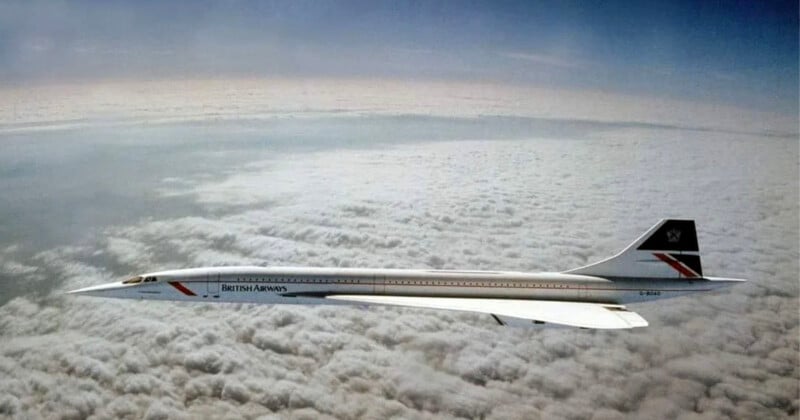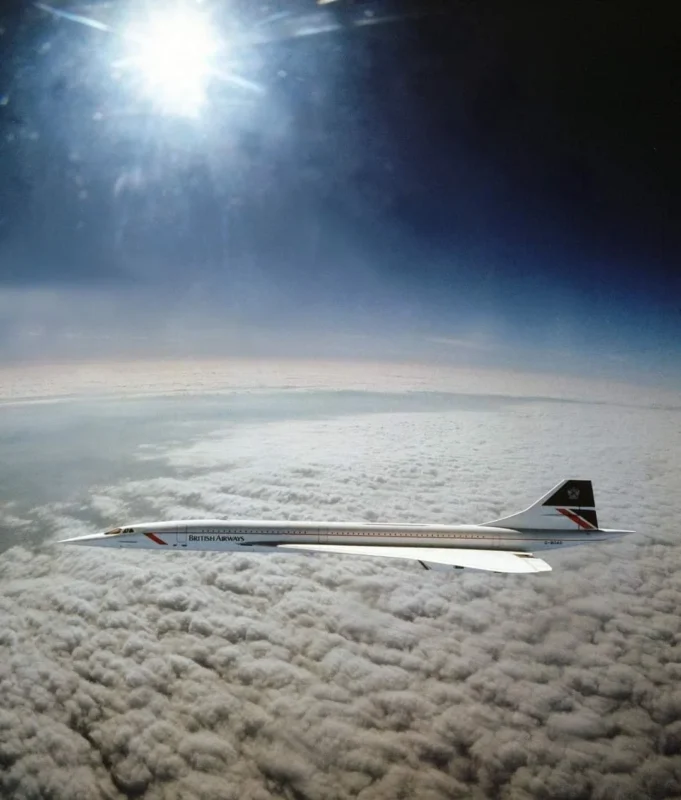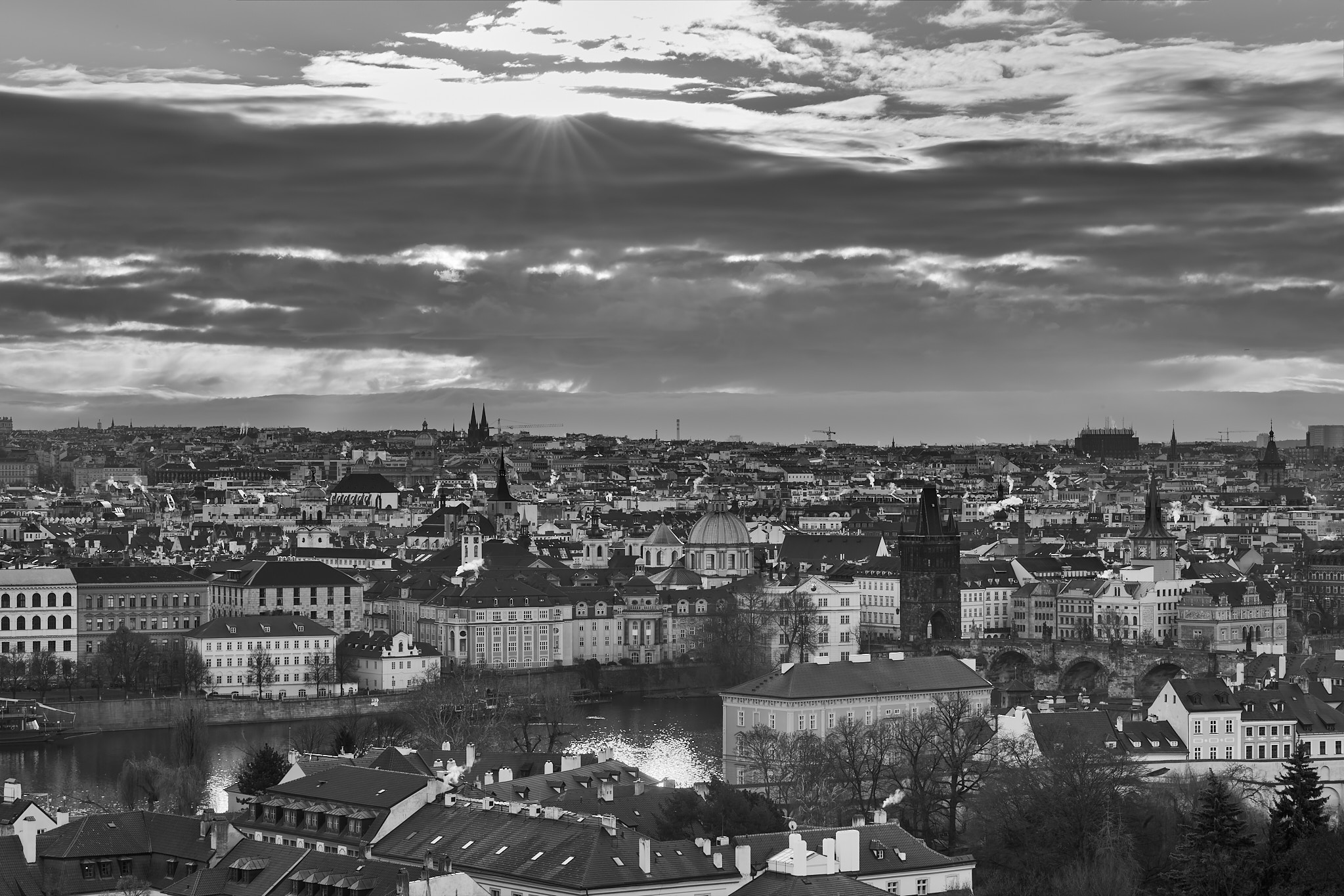 The iconic Concorde cruising at supersonic speed. | Adrian Meredith/RAF
The iconic Concorde cruising at supersonic speed. | Adrian Meredith/RAFThe Concorde was the fastest commercial airliner in history with an astonishing cruising speed of roughly 1,354 miles per hour otherwise known as Mach 2.04.
Being the iconic airplane that it was, picture desks around the world wanted a photo of Concorde traveling at Mach 2 — twice the speed of sound.
But the only aircraft capable of reaching those speeds was also a Concorde which is not an aircraft you can commandeere solely for the purpose of taking a photo.
So in April 1985, a Royal Air Force (RAF) Tornado jet rendezvoused with a Concorde above the Irish Sea and Adrian Meredith was able to capture a photo of the airplane traveling at supersonic speed. But it wasn’t straightforward.
 Flying serenely over the Irish Sea toward New York City. | Adrian Meredith
Flying serenely over the Irish Sea toward New York City. | Adrian MeredithWhile the RAF Tornado could match Concorde’s cruising speed, it could only sustain such speeds for a few minutes due to the immense fuel consumption. The Aviation Geek Club reports the Tornado had to be stripped of all unnecessary equipment to maximize its performance.
After multiple attempts to get the perfect shot, Concorde had to reduce its speed from Mach 2 to Mach 1.5-1.6 to allow the Tornado crew to position themselves.
Once in position, the Tornado crew managed to capture the photo but could only maintain formation for about four minutes before breaking off, as their fuel reserves rapidly dwindled. Meanwhile, the Concorde continued its effortless cruise toward New York’s JFK Airport.
One-of-a-Kind Airplane
Concorde was a marvel of aviation. On February 7, 1996, it completed its fastest transatlantic crossing, flying from New York to London in an astonishing 2 hours, 52 minutes, and 59 seconds. The supersonic jet had a maximum speed of Mach 2.04 (1,354 mph or 2,180 km/h at cruising altitude) and could carry between 92 and 128 passengers. Entering service in 1976, the Concorde remained in operation for 27 years, redefining air travel.
The Concorde was jointly developed by British Aircraft Corporation (BAC) and Aérospatiale under an Anglo-French treaty. A total of 20 Concorde aircraft were built, including six prototypes and development models. Air France and British Airways were the only airlines to operate the Concorde, using it primarily for transatlantic flights between London, Paris, New York, Washington, and Barbados. These routes were completed in less than half the time of traditional airliners.
Despite its technological brilliance, Concorde was retired in 2003. Several factors contributed to its downfall, including the tragic crash of Air France Flight 4590 in July 2000, which claimed the lives of all onboard. The downturn in commercial aviation following the September 11 attacks, combined with the ceasing of maintenance support by Airbus, ultimately grounded the supersonic icon.







 English (US) ·
English (US) ·